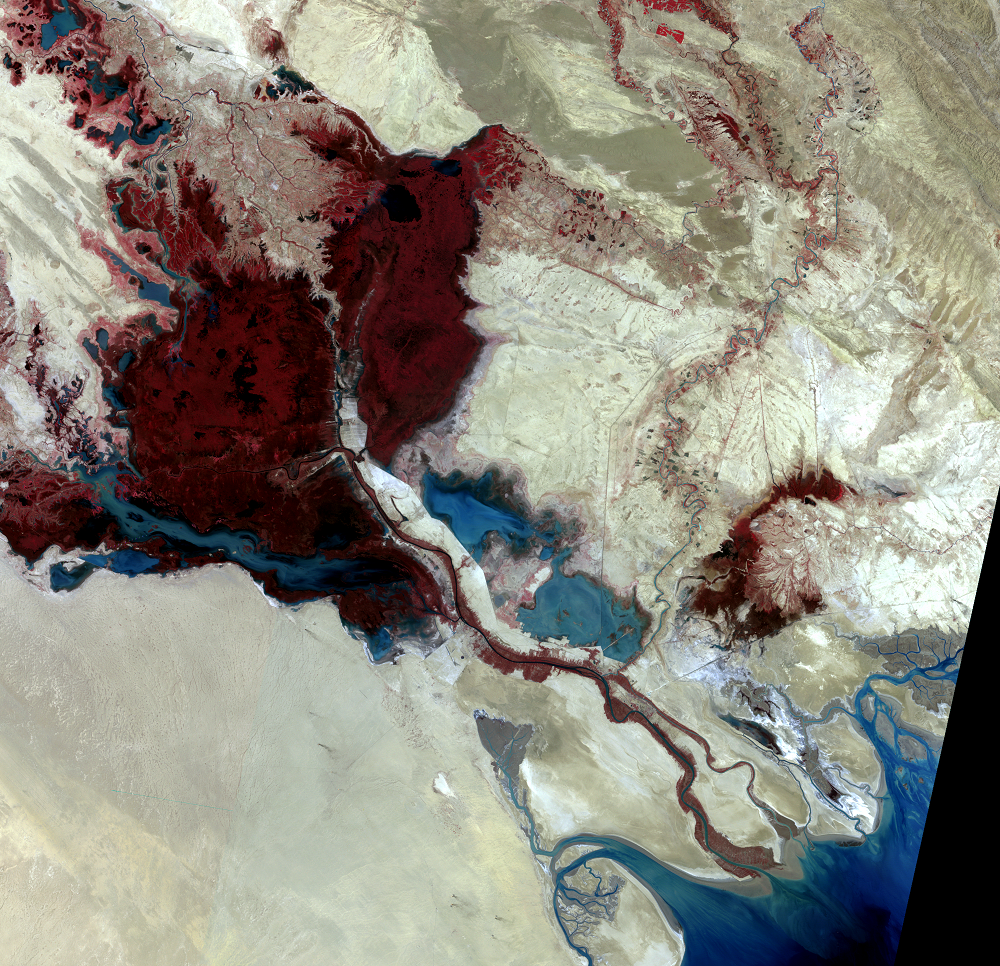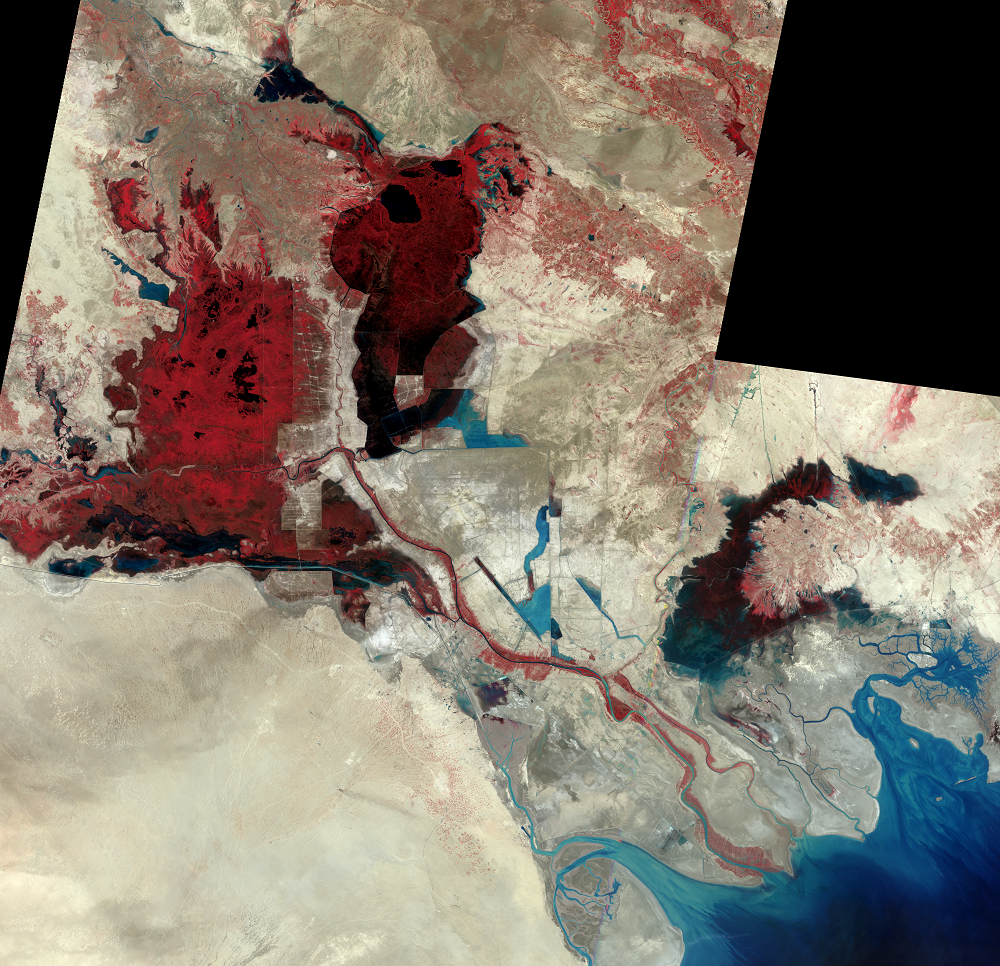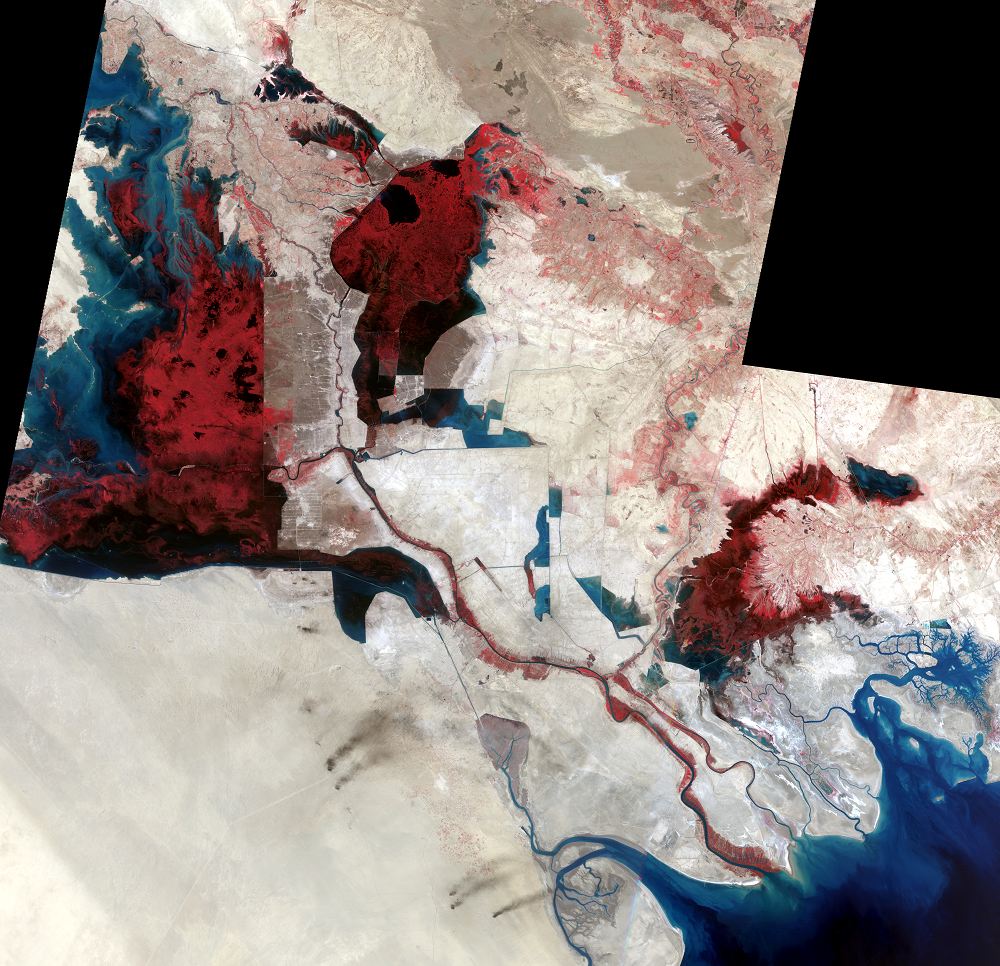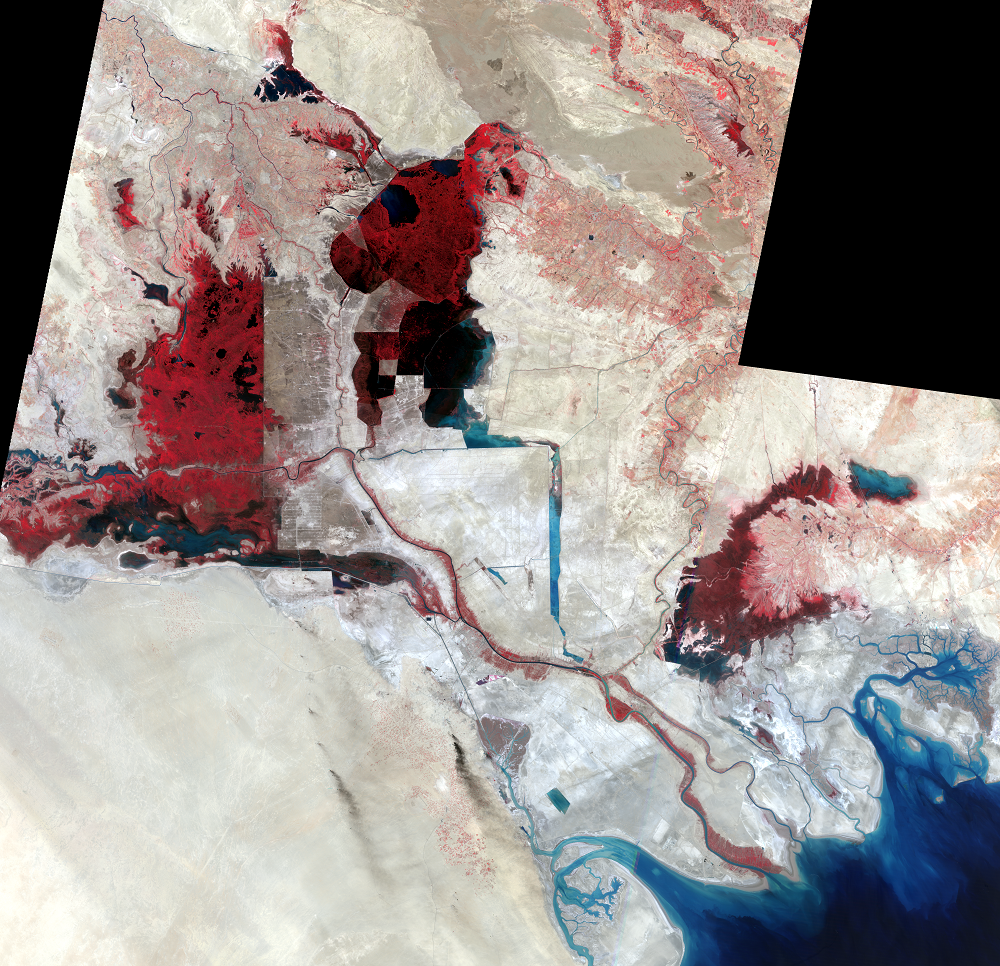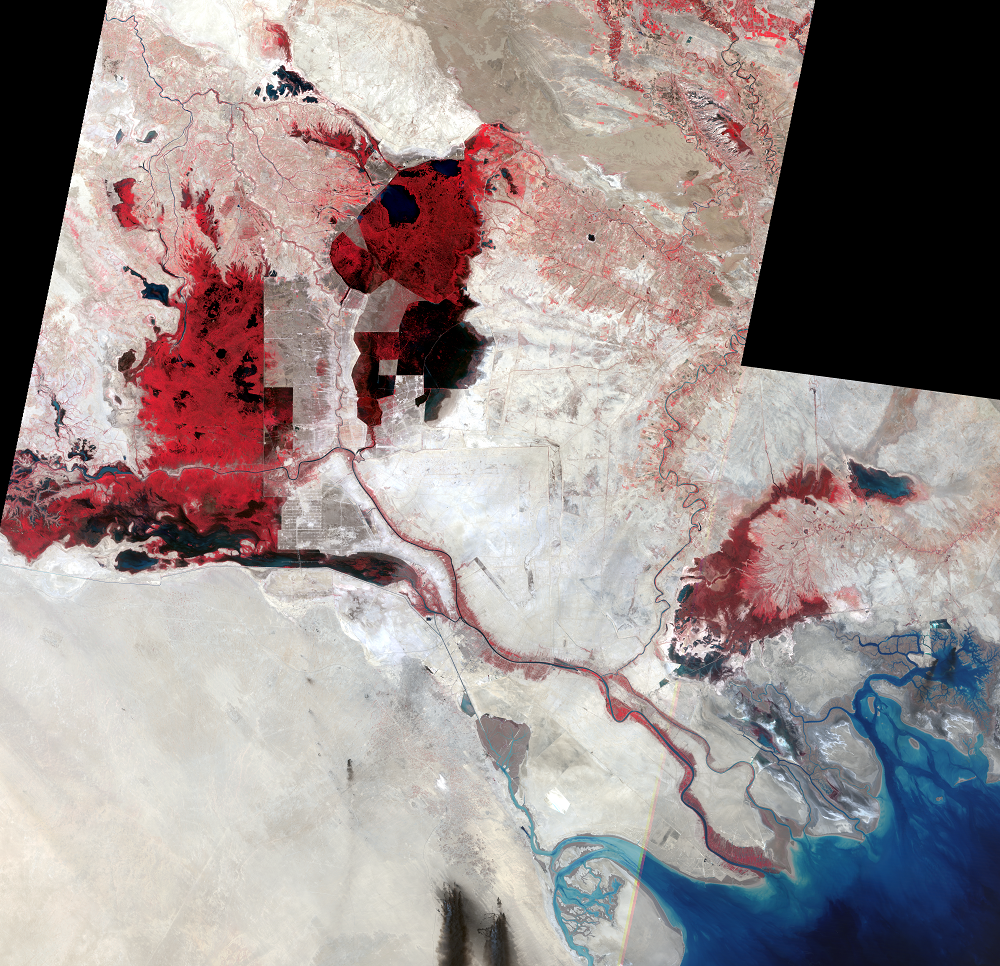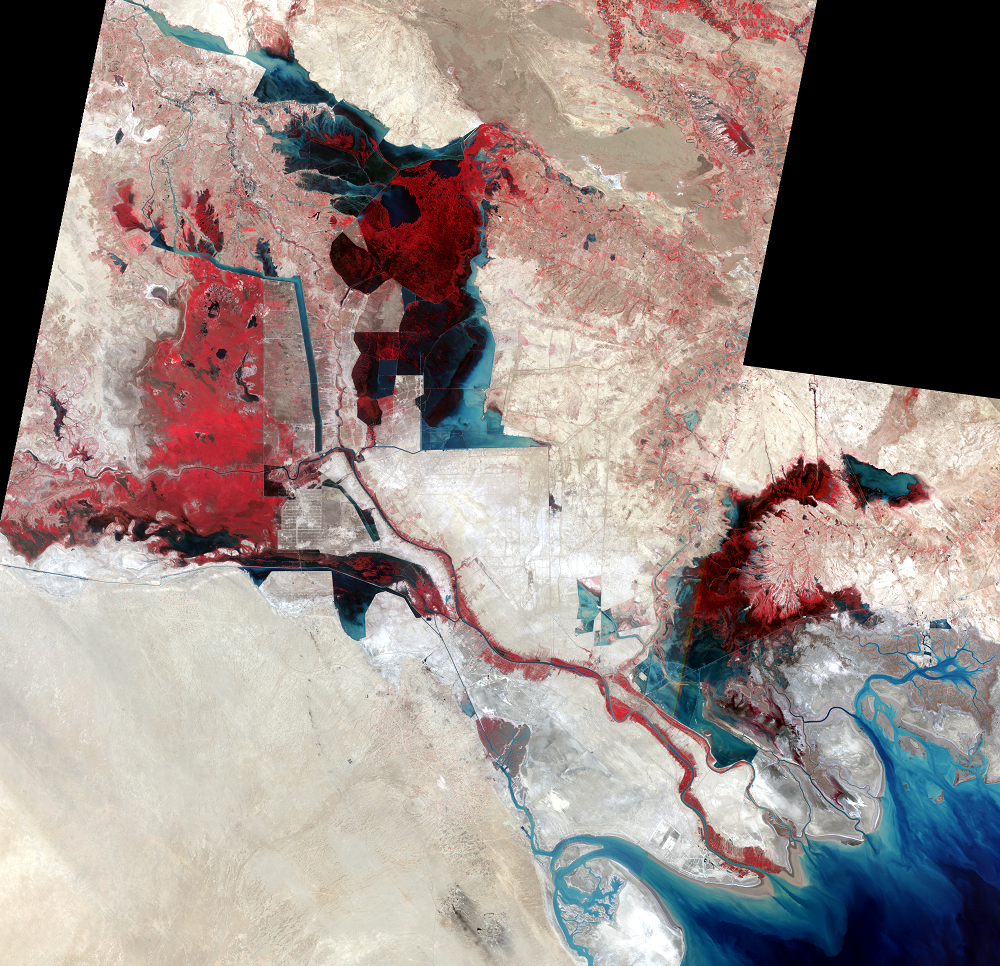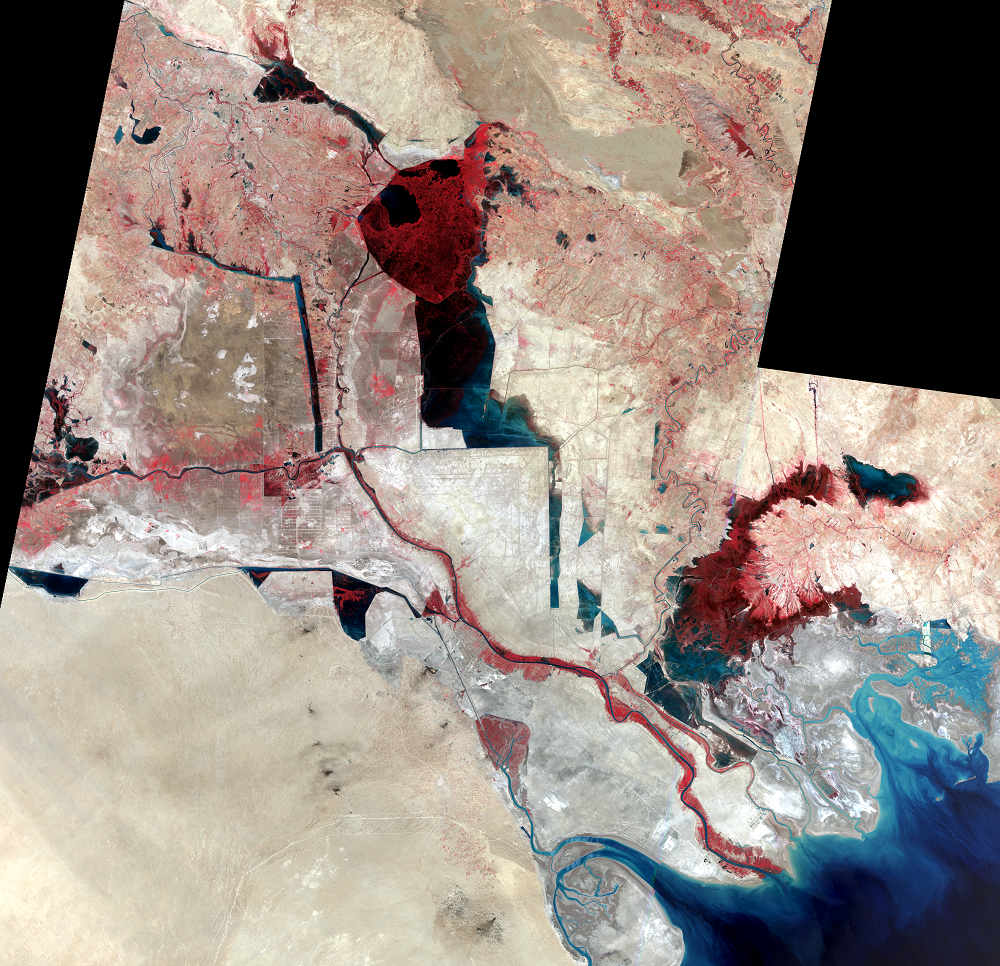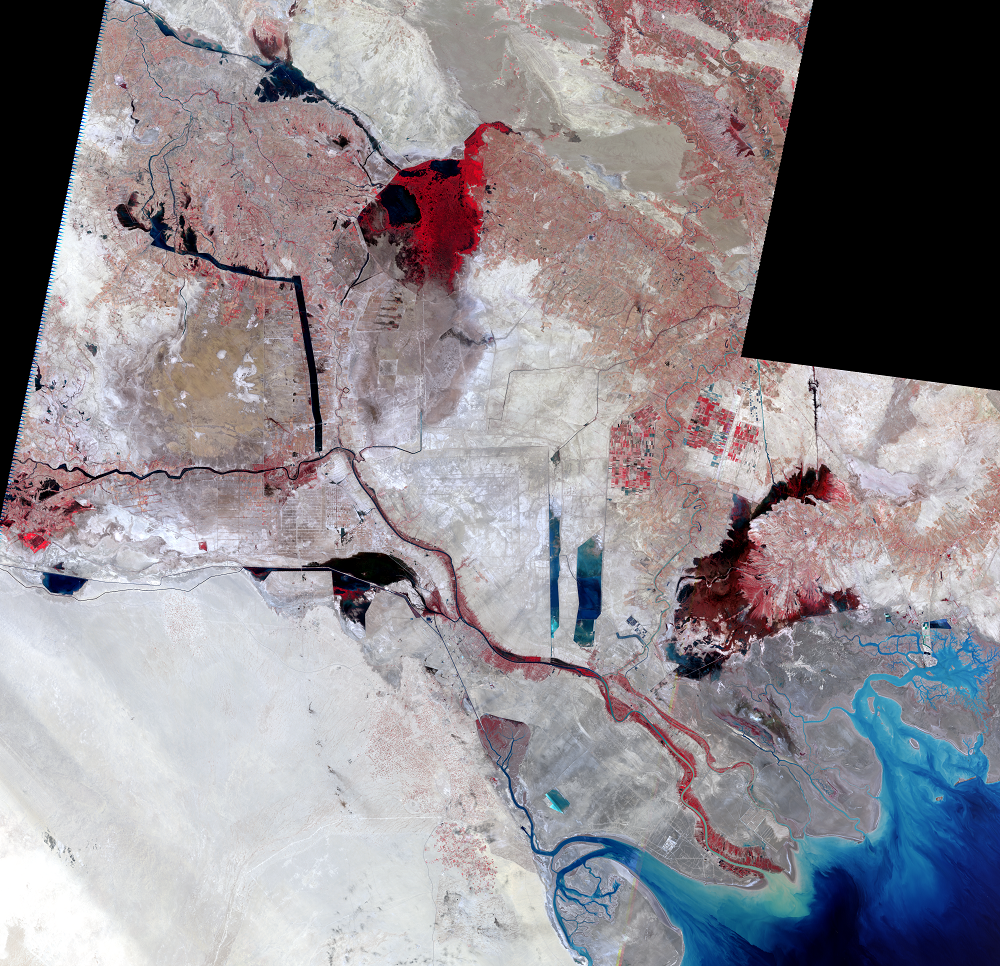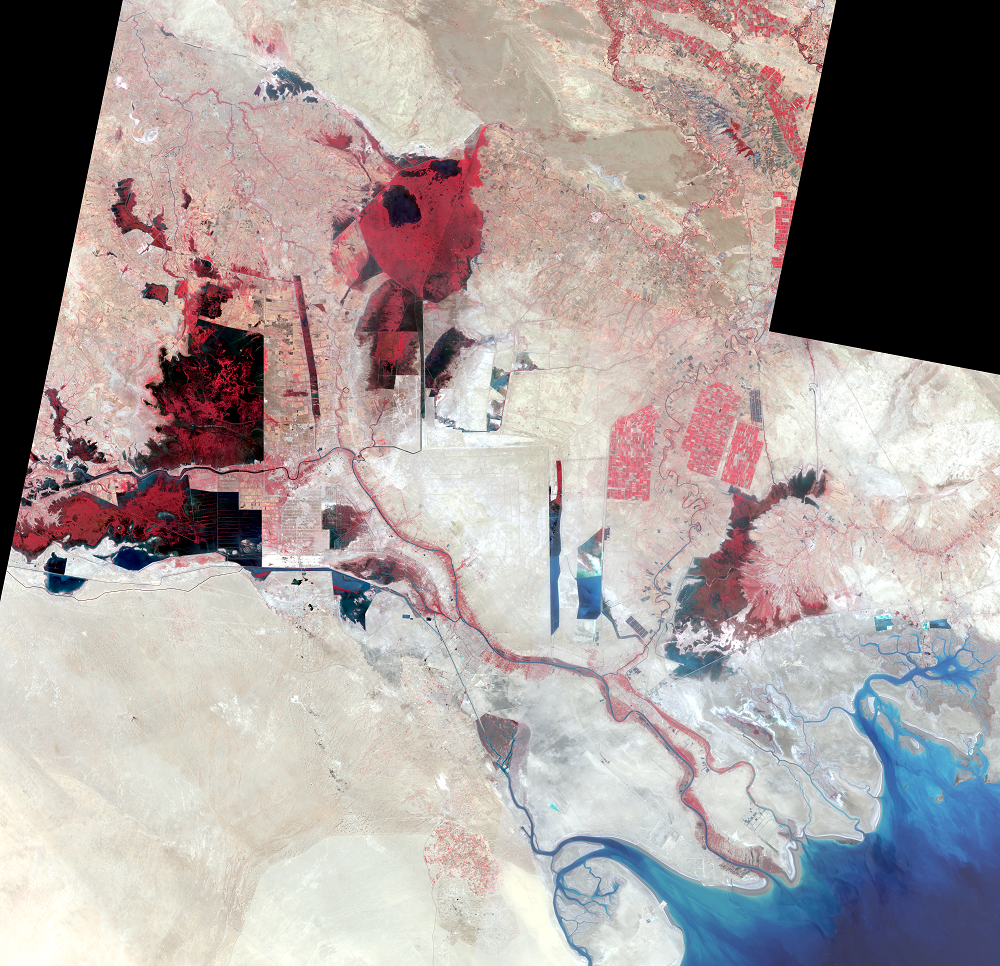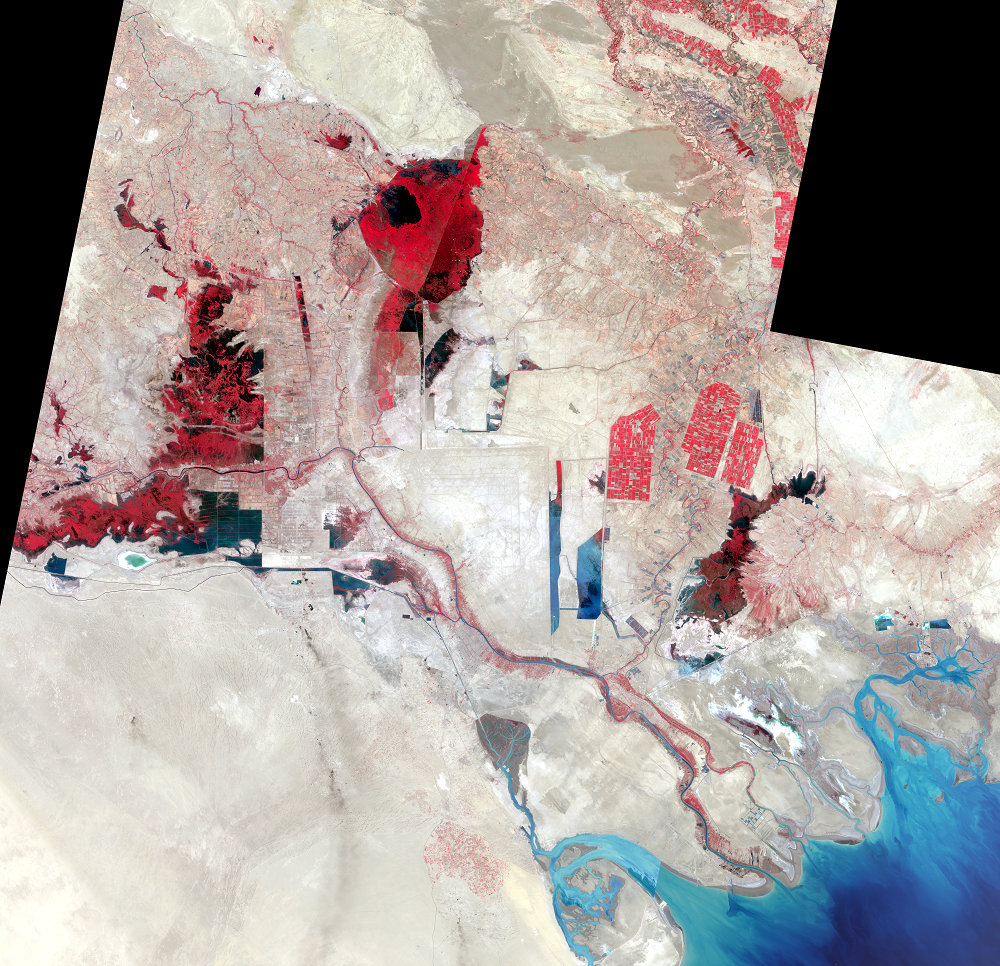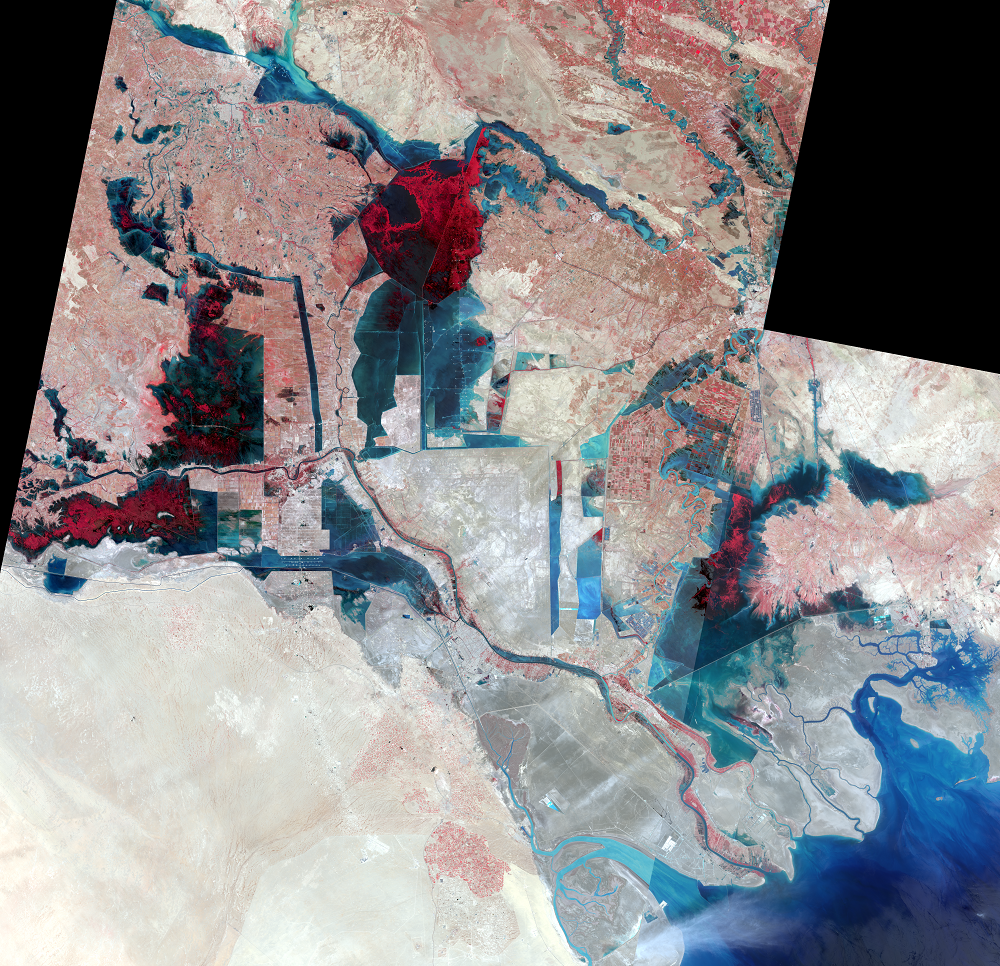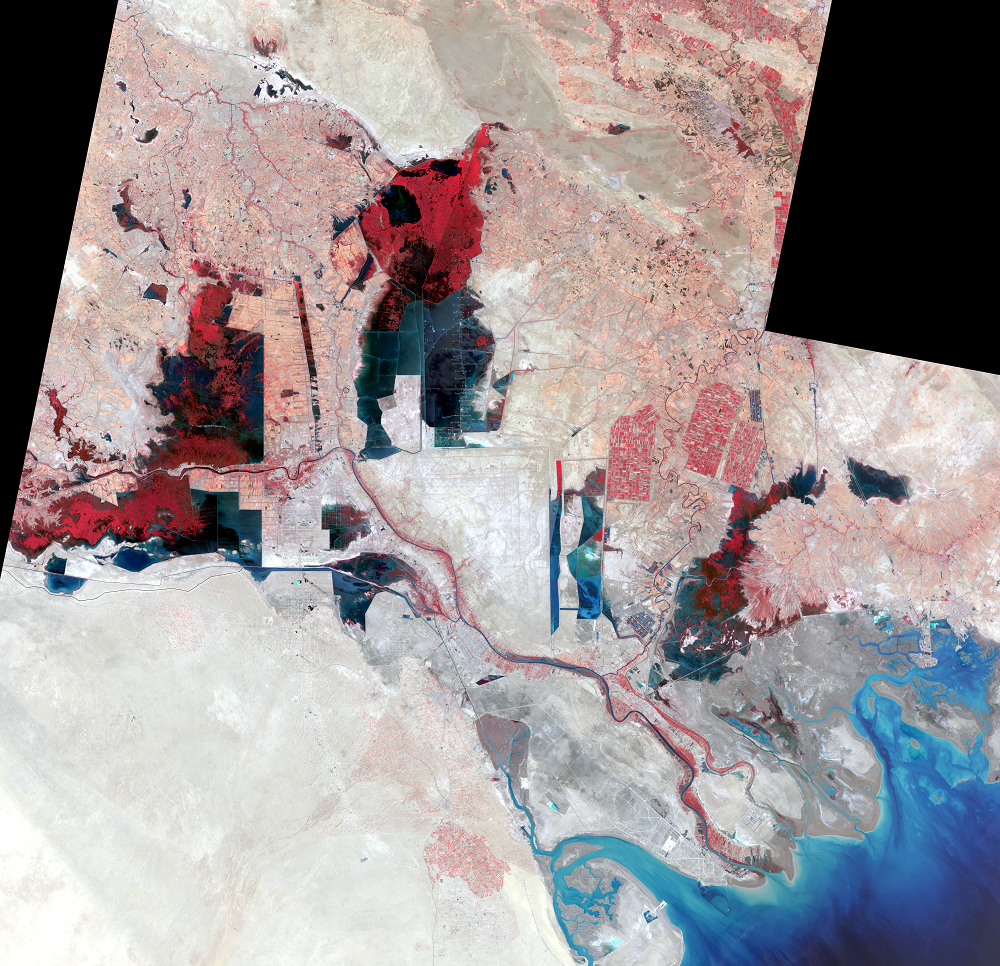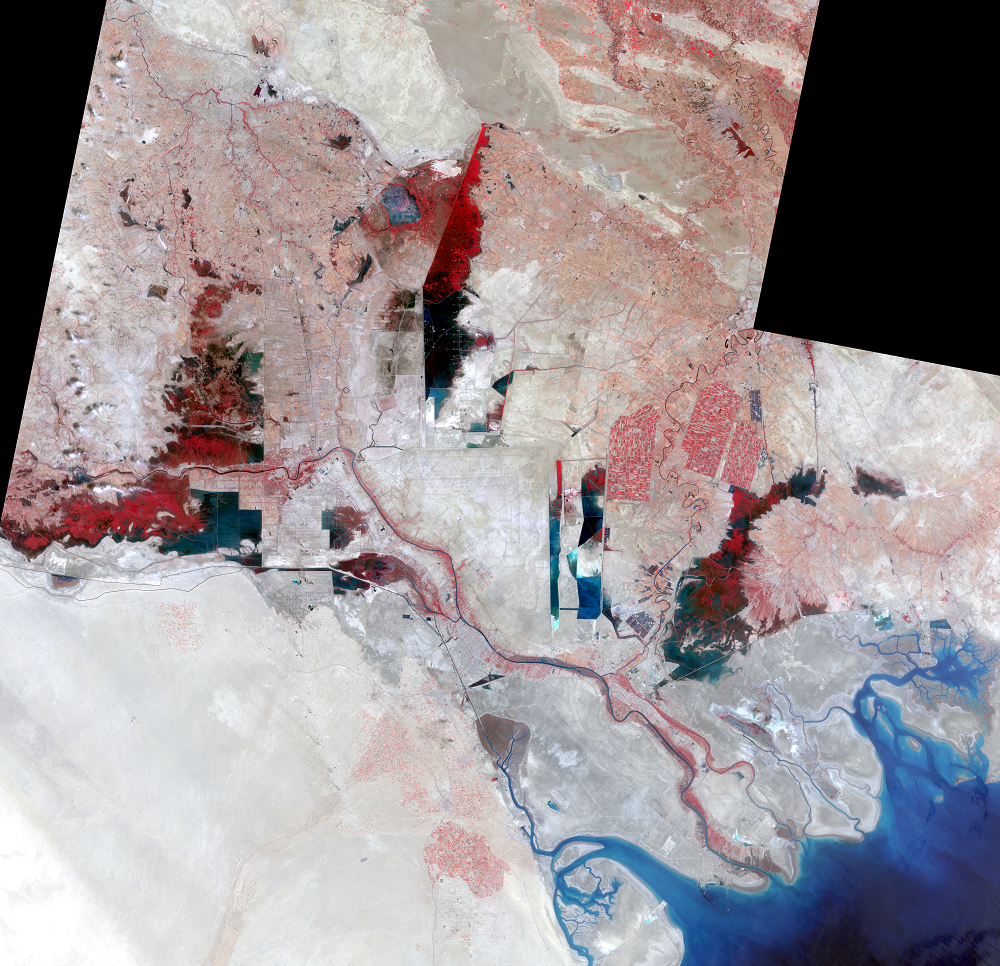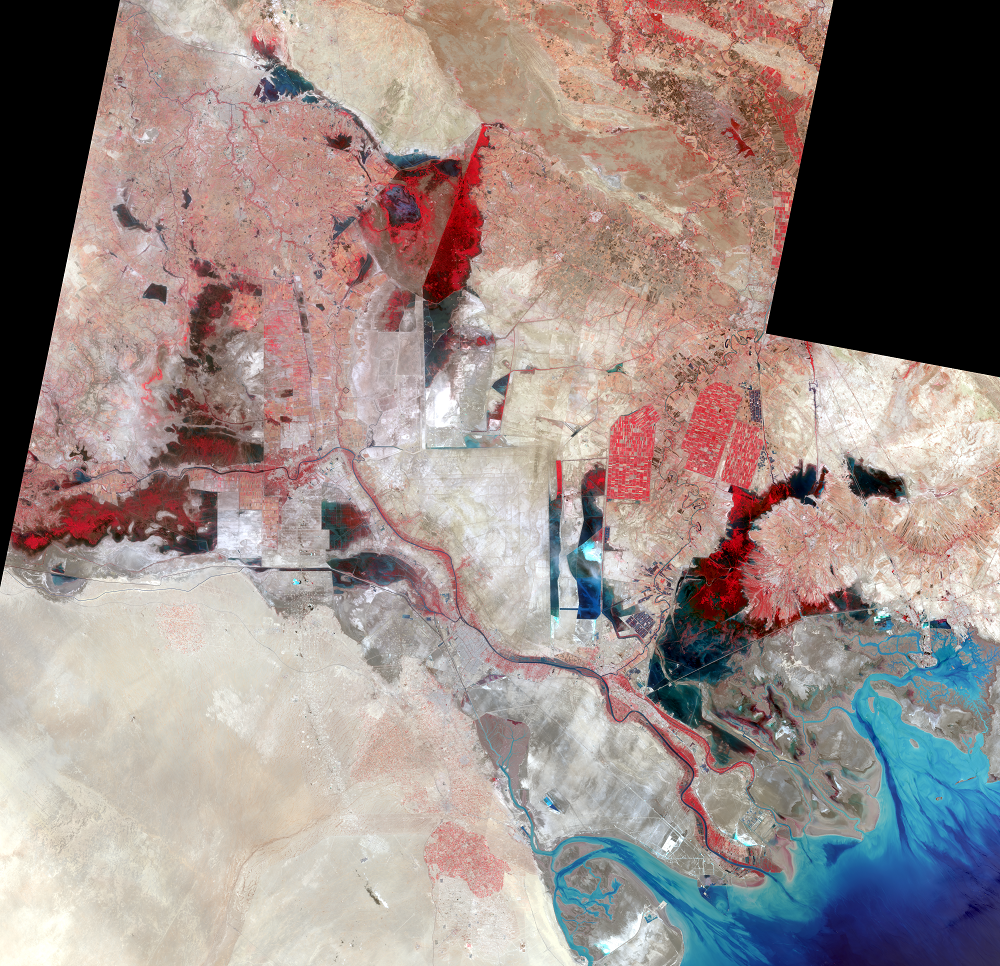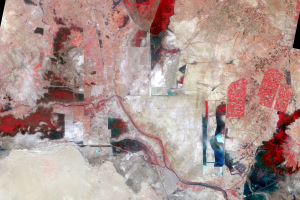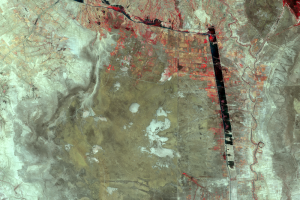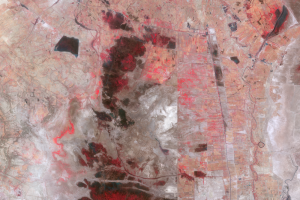
Mesopotamian Marshes, Iraq
Earth Resources Observation and Science (EROS) Center - Earthshots
Fifty years of observing the Earth means Landsat has witnessed many land surface changes. A few of those changes are shocking in their sheer scale and swiftness.
A vast wetland in southern Iraq has been decimated in recent decades by a variety of factors—all documented by the consistent and objective data from Landsat satellites.
Imagery from Landsat’s first few weeks of operation in summer 1972 shows the Mesopotamian Marshes at nearly their maximum extent. Over time, Landsat shows the marshes diminish, dry up, and then partially recover.
The Mesopotamian Marshes are divided into three areas: Al Hammar, Central, and Al Hawizeh.
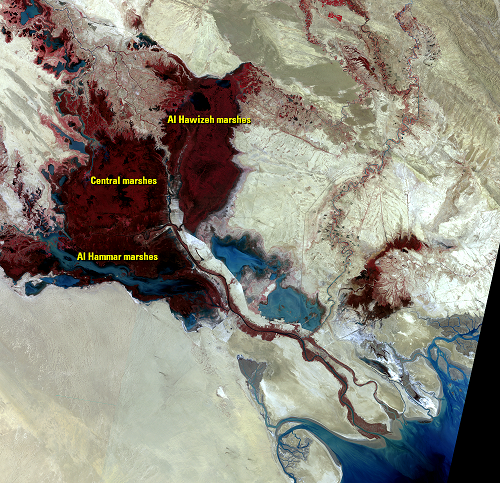
Imagery
Downloads
Ahram, A.I., 2015, Development, Counterinsurgency, and the Destruction of the Iraqi Marshes: International Journal of Middle East Studies, v. 47, no. 3, p. 447–466, https://www.jstor.org/stable/43997992.
Crisp, W., 2023, After Comeback, Southern Iraq’s Marshes Are Now Drying Up: Yale Environment 360, accessed May 26, 2023, at https://e360.yale.edu/features/iraq-marshes-drought-climate-change.
Darbyshire, E., 2021, The past, present and future of the Mesopotamian marshes: Conflict and Environment Observatory, accessed May 9, 2022, at https://ceobs.org/the-past-present-and-future-of-the-mesopotamian-marshes/.
Di Ilio, N., 2022, Strains on ancient Mesopotamian marshes imperil ecology, way of life: Al-Monitor, accessed May 9, 2022, at https://www.al-monitor.com/originals/2022/02/strains-ancient-mesopotamian-marshes-imperil-ecology-way-life.
Dimick, D., 2015, Photos from 1967 Reveal a Lost Culture in Iraq: National Geographic, accessed May 9, 2022, at https://www.nationalgeographic.com/photography/article/photos-from-1967-reveal-a-lost-culture-in-iraq.
Environmental Justice Atlas, 2018, Marsh Arabs and Draining of Iraqi Wetlands, Iraq: Environmental Justice Atlas, accessed May 9, 2022, at https://ejatlas.org/conflict/marsh-arabs-and-draining-of-iraqi-wetlands-iraq.
Fawzi, N.A., Goodwin, K.P., Mahdi, B.A., and Stevens, M.L., 2016, Effects of Mesopotamian Marsh (Iraq) desiccation on the cultural knowledge and livelihood of Marsh Arab women: Ecosystem Health and Sustainability, https://doi.org/10.1002/ehs2.1207.
McCarron, L., 2021, The Last of the Marsh Arabs: Noema, accessed May 9, 2022, at https://www.noemamag.com/the-last-of-the-marsh-arabs/.
NASA, 2009, Reclaiming Mesopotamia’s Marshes: NASA Earth Observatory, accessed May 9, 2022, at https://earthobservatory.nasa.gov/images/38409/reclaiming-mesopotamias-marshes.
NASA, 2010, World of Change: Mesopotamia Marshes: NASA Earth Observatory, accessed May 9, 2022, at https://earthobservatory.nasa.gov/world-of-change/Iraq.
UNEP, 2001, The Mesopotamian Marshes—The Demise of an Ecosystem: UNEP Early Warning and Assessment Technical Report, accessed May 9, 2022, at https://wedocs.unep.org/bitstream/handle/20.500.11822/8231/-The%20Mesopotamian%20Marshlands%20_%20Demise%20of%20and%20Ecosystem-2001227.pdf?sequence=3.
Vinez, M., and Leonard, S., 2010, The Iraq Marshlands—the Loss of the Garden of Eden and its People: Illinois State University, accessed May 9, 2022, at https://pol.illinoisstate.edu/downloads/conferences/2011/LeonardIraqMarshes.pdf.

